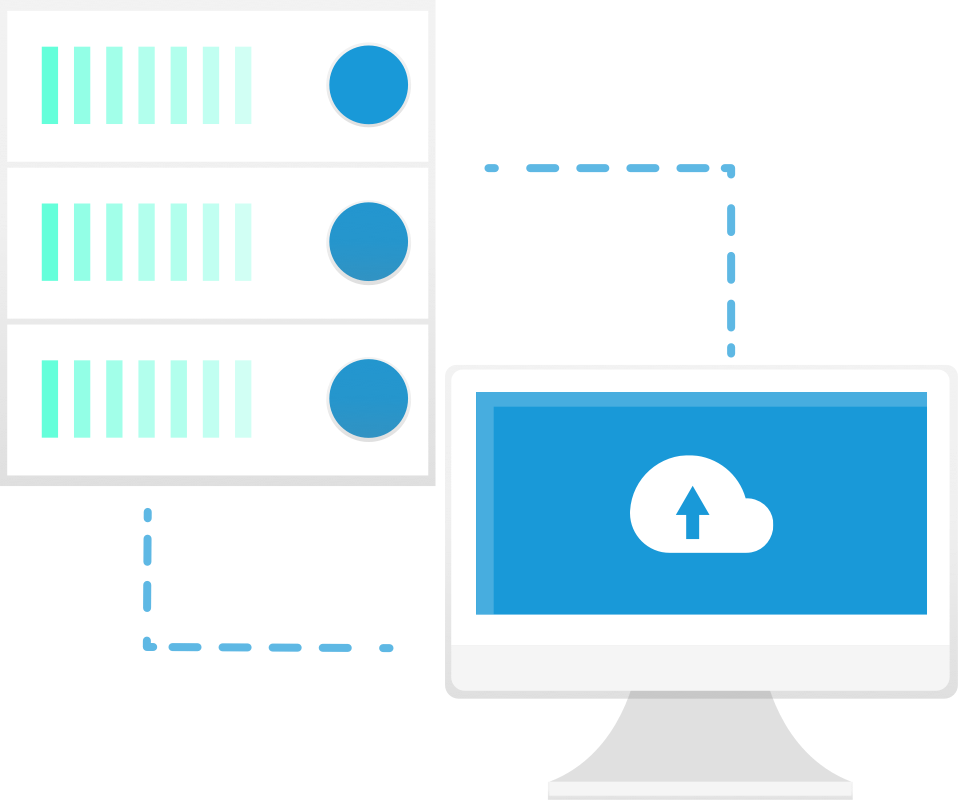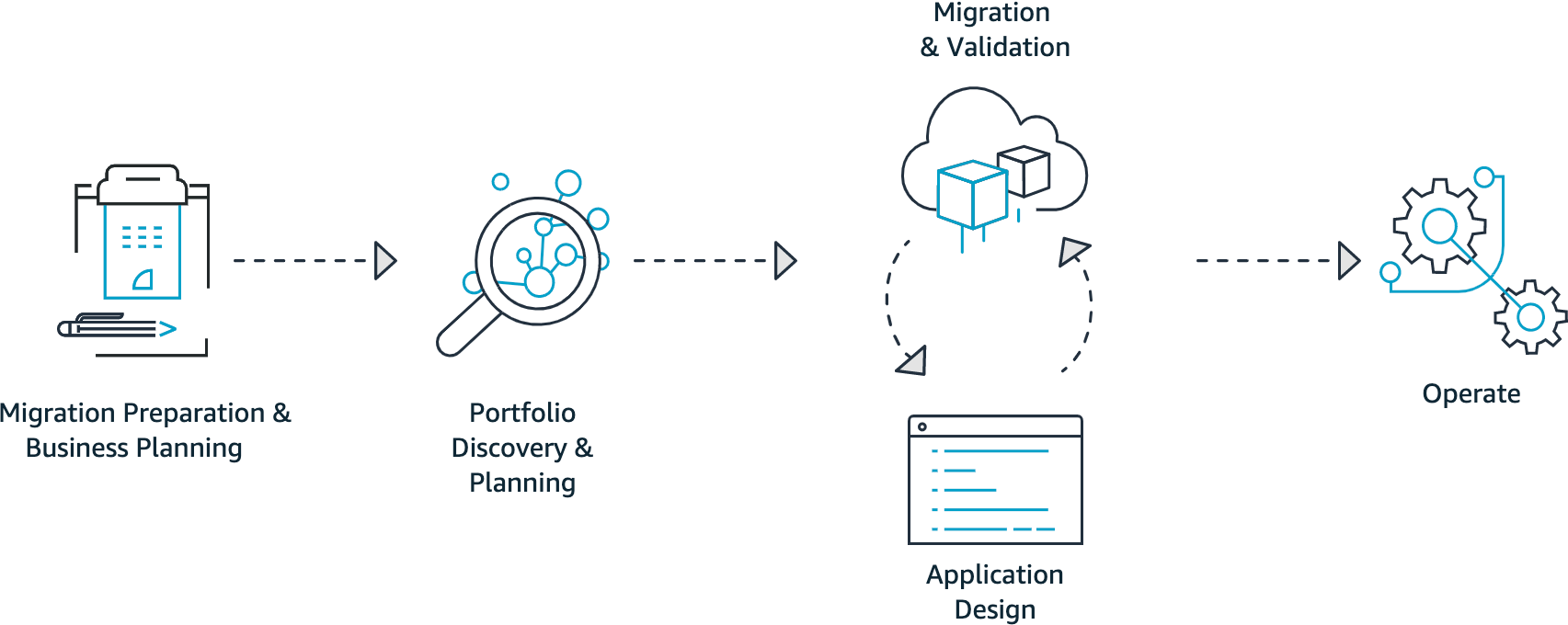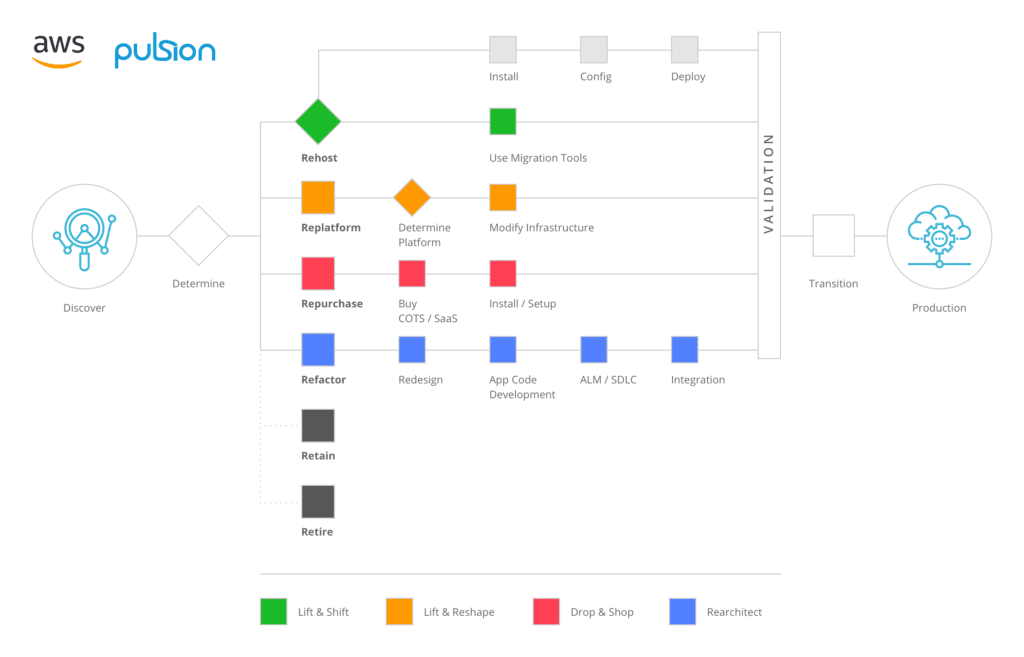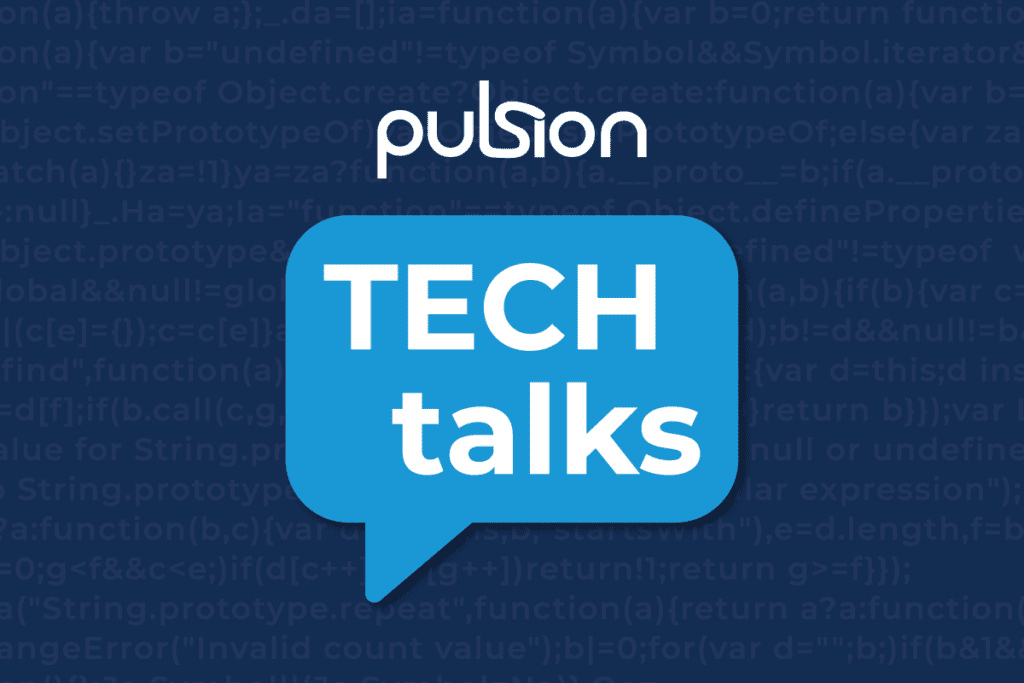Transform the Way You Do Business
Cloud migration enables organisations of all sizes to transform the way they do business by empowering them to accelerate their speed of doing business, freeing them from the constraints of on-premise data centres, and providing the flexibility to pay for what they use. This guide from AWS, details how cloud migration can deliver significant business benefits.
Key to successful cloud migration is a robust and compelling business case, clearly identifying the specific business benefits your organisation will achieve by migrating to the cloud. A robust methodology is key and AWS provide a 5-phase migration process as a guide to migration as well as 6 common strategies that are used to move applications and workloads to AWS.

Building the Business Case
A robust and thorough business case is critical.
The core of building the business case for cloud migration is to determine the outcome for the organisation. What advantage do you want to gain from cloud migration? For example, your IT team will spend significantly less time managing on-premise infrastructure and upgrades which in turn removes the need for large upfront investments in hardware and software or managing ongoing maintenance.
Faster time to market, improved workforce productivity and greater transparency into operational costs are some of the most common reasons our customers migrate to AWS. Other frequent business drivers are increased operational agility enabling the organisation to react to changing market conditions.
Pulsion choose to work with AWS to ensure our clients can create a strong business case for cloud migration based on sound planning and preparation. This helps to accurately determine the cost of the current on-premise data centre, the anticipated costs of the cloud migration and the costs of the new AWS solution.
Building the business case provides answers to some key questions:
- What is the estimated Return on Investment (ROI) and when will the project provide a positive cash flow?
- What are some of the other business value benefits of cloud adoption, beyond cost savings?
- What is the potential business impact of migrating a select group of applications first?
- What factors help determine if a hybrid cloud solution would be the best solution?
- What indicators are used to estimate how long the migration process will take?
Building the business case for cloud migration is an important first step and as the process evolves you will be able to consider the many ways this transformation will impact the overall organisation for the better.
The AWS 5 Phase Migration Process
The 5 phase cloud migration process built by AWS guides an organisation to through the migration of tens, hundreds even thousands of applications. This is a way to envision the key milestones throughout the cloud migration journey.

Phase 1 – Migration Planning and Business Planning
Developing a sound business case required taking your objectives into account, along with the age and architecture of existing applications and any constraints.
Engaged leadership, frequent communication and clarity of purpose along with aggressive but realistic goals and timescales makes it easier for an entire organisation to get on board and support the decision to migrate.
Establishing a team to be the Cloud Centre of Excellence (CCoE) helps to build and maintain support from the entire organisation throughout the cloud migration project. The CCoE will:
- Get executive buy-in which in turn will lead to an organisation wide commitment to cloud migration
- The CCoE structure will evolve and develop as the organisation transforms
- Organisation change is fundamental to success of the cloud migration project, therefore targeted organisational change management will lead to change in company norms and culture
- Embrace a change as normal mindset; change of applications, IT systems and business direction should be expected
- Operating model decisions will determine how people will fill roles that achieve desired business outcomes
Phase 2 – Portfolio Discovery and Planning
A full analysis of your hardware and software portfolio, with a mapping of interdependencies and migration strategies and priorities are key elements to building a plan for a successful migration.
The complexity and level of business impact of your applications will influence how you migrate. Beginning the migration process with less critical and complex applications provides a solid learning opportunity for the team to:
- Gain confidence they are not practising with mission critical applications in the early stages of the migration process
- Foundational learnings they can apply to future migration iterations
- Ability to fill skills and process gaps and reinforce best practices
The CCoE plays an integral role in beginning to identify the roles and responsibilities of the smaller migration teams in this phase of the migration process. It is important to gain familiarity with the operational processes that your organisation will use on AWS. This will help your workforce build experience and start to identify patterns that can help accelerate the migration process, simplifying the method of determining which groups of applications can be migrated together.
Phases 3 & 4 – Application Design and Migration & Validation
These two phases combine as they are usually executed at the same time. The focus shifts at this point from portfolio level to individual applications. Each application is designed, migrated and validated according to one of the six application strategies.
A continuous improvement approach is often recommended. The level of project fluidity and success frequently comes down to how well you apply the iterative methodology in these phases.
Phase 5 – Modern Operating Model
As applications are migrated, you optimise your new foundation, turn off the old systems and constantly iterate towards a modern operating model. The operating model will become more sophisticated as your migration accelerates.
Six Common Migration Strategies – The 6 Rs
There is no one size fits all approach to cloud migration, the focus should be on grouping each of the IT portfolio’s applications into buckets defined by each of the strategies.
Identifying which migration strategy will be best suited to the different parts of your portfolio simplifies the process. Similar applications in your portfolio can be grouped together and moved to the AWS cloud environment at the same time.

R1: Rehost – “Lift and Shift”
Typically in a large legacy migration strategy where the organisation is looking to adopt the cloud quickly to meet a particular business case the majority of applications would be rehosted.
R2: Replatform – “Lift, Tinker and Shift”
This involves making some optimisations for cloud to achieve a specific benefit without changing the core of the application.
R3: Repurchase – “Drop and Shop”
Move to a newer version or a different solution and will likely mean a change to any existing licensing models being used.
R4: Refactor (Re-Architect) – Employing “cloud native” features
This is driven by a strong business case to add features, scale or performance that would otherwise be difficult to achieve in the application’s existing environment.
R5: Retire – Decommission or archive any part of the portfolio no longer required
Identify assets that are no longer useful and can be turned off will boost the business case for cloud migration and help to focus attention on maintaining resources that are widely used and necessary.
R6: Retain – Do nothing for now and revisit later
In this case the organisation would retain portions of their IT portfolio because they are too complex or challenging to move right away and they would be better to remain on premise while more work is carried out to determine if and when they can move to the cloud.



